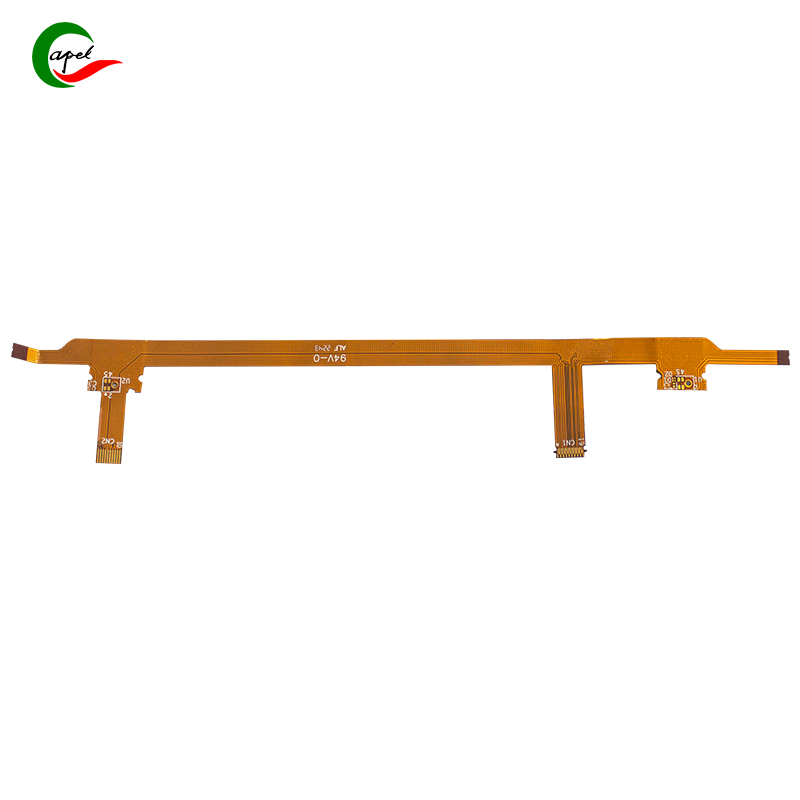How to Prevent Coverlay Lifting in FPC Prototyping and Mass Production
Date: 2025-09-27
Coverlay serves as a critical insulating protective layer for Flexible Printed Circuits (FPCs). Bonded to the FPC substrate via lamination, it safeguards circuits, enhances insulation performance, and improves board flexibility. However, coverlay lifting—characterized by edge detachment from the substrate or local bulging—is a common issue in both prototyping and mass production. This problem not only compromises product appearance but also risks exposing, oxidizing, or breaking circuits, directly reducing FPC reliability. To avoid it, comprehensive optimizations are required across material matching, process control, and environmental management, with distinct priorities for prototyping and mass production.
Whether in prototyping or mass production, coverlay lifting essentially stems from insufficient bonding strength at the lamination interface. Three key factors contribute to this:
-
Poor Material Compatibility: Mismatched chemical properties between the coverlay adhesive layer and the FPC substrate (e.g., polyimide), or adhesive degradation (e.g., prolonged storage), prevent stable bonding post-lamination.
-
Uncontrolled Process Parameters: Improper temperature, pressure, or duration during lamination fails to fully melt or cure the adhesive, resulting in "false bonding"—superficial adhesion with weak actual bonding strength.
-
Contamination and Stress Interference: Oil, dust, or other contaminants on the substrate surface, or significant differences in thermal shrinkage rates between the coverlay and substrate, cause edge lifting as stress is released after lamination.
Prototyping involves small batches and frequent equipment adjustments, so the priority is to ensure process stability for small-scale production to prevent lifting:
-
Stringent Material Preprocessing: Before prototyping, inspect the coverlay adhesive layer (ensure no oxidation or delamination) and clean the FPC substrate surface (use dedicated solvents to remove oil and dust). If necessary, use plasma treatment to enhance substrate surface activity and improve adhesive adhesion.
-
Precise Lamination Parameter Tuning: Based on coverlay thickness and adhesive type (e.g., thermosetting adhesive), test lamination parameters within a narrow range. Temperature must be high enough to fully melt the adhesive without causing degradation; pressure should evenly cover the entire surface (especially edge areas); and duration must meet adhesive curing requirements. Record parameters for each prototype batch to develop a tailored solution.
-
Refined Edge Handling: FPCs for prototyping may have irregular dimensions. Ensure coverlay cutting edges are smooth (to avoid stress concentration) and align the coverlay with the substrate edges precisely (control misalignment to a minimal range). If needed, pre-press edges to reduce future lifting risks.

Mass production requires addressing process stability at scale and preventing widespread lifting through standardized procedures:
-
Material Batch Control: Source coverlay from the same batch (to minimize adhesive performance variations) and conduct random adhesive tack tests (e.g., peel tests) before storage. Pre-match the thermal shrinkage rates of substrates and coverlay (keep differences within a reasonable range) to reduce post-lamination stress at the source.
-
Equipment Stability Assurance: Regularly calibrate lamination equipment (e.g., pressure sensors, temperature uniformity) to ensure consistent lamination conditions for every FPC in mass production. For large-size FPCs, use segmental lamination or stepwise heating to avoid bubbles and lifting caused by insufficient local pressure.
-
Integrated Full-Process Quality Inspection: Add a "24-hour static inspection post-lamination" to detect hidden lifting (e.g., micro-edge lifting). Use Automated Optical Inspection (AOI) or manual sampling to focus on high-risk areas prone to lifting, such as bent regions and irregular edges. If issues are found, stop production immediately to adjust parameters.
The following measures further reduce lifting risks in both prototyping and mass production:
-
Storage Environment Control: Store coverlay in a cool, dry place (to prevent adhesive failure from high temperature/humidity) and use it within its shelf life (typically no longer than 6 months).
-
Post-Processing Optimization: Allow fully cured FPCs post-lamination (e.g., static placement at high temperature) to ensure complete bonding between the adhesive and substrate and release internal stress.
-
Design Adaptability Improvement: During FPC design, avoid aligning coverlay edges with bent areas (to reduce tensile force during bending). For large-size coverlay, add "anchoring structures" (e.g., local openings to enable direct adhesive-substrate bonding) to enhance overall adhesion.
The core of preventing FPC coverlay lifting is improving bonding strength at the lamination interface. The prototyping phase builds a basic process plan through refined tuning and detail control, while mass production ensures consistency via standardization, equipment calibration, and full-inspection mechanisms. Only strict end-to-end control—from material matching and process parameters to environmental management and design optimization—can completely resolve lifting issues and guarantee FPC insulation and reliability. For manufacturers, this is not only the foundation of quality assurance but also key to enhancing customer trust.
related link:
